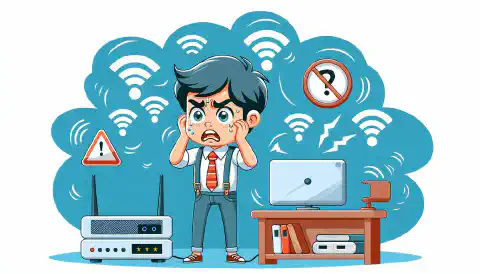Mobile Device Security: Effective Tips for Keeping Your Data Safe

Table of Contents
Securing Your Mobile Device: Tips for Keeping Your Data Safe
Mobile devices have become an integral part of our daily lives. We use them to stay connected with friends and family, access information online, and even manage our finances. However, with the increasing use of mobile devices comes the risk of cyber threats. Hackers and cybercriminals are always on the lookout for user data, and mobile devices are not an exception. In this article, we will discuss some effective tips for securing your mobile device and keeping your data safe.
Understanding Mobile Device Security Risks
Mobile devices have become an integral part of our lives. We use them for everything from communication to banking. However, with the convenience of mobile devices comes the risk of security breaches. Before we dive into the tips, let’s understand the security risks associated with mobile devices.
Cybercriminals use various techniques to steal data from mobile devices. Some of these techniques are:
Common Mobile Security Threats
- Phishing attacks - where users are tricked into sharing their personal information through fake emails or websites. These attacks are becoming increasingly sophisticated, making it difficult for users to differentiate between a legitimate and a fake email or website.
- Malware and viruses - which can infect the device and steal user data. Malware can be disguised as a legitimate app or software, making it difficult for users to identify the threat.
- Unsecured public Wi-Fi networks - where cybercriminals can intercept user data. Public Wi-Fi networks are often unencrypted, making it easy for cybercriminals to gain access to user data.
- Lost or stolen devices - which can give unauthorized users access to the device’s data. If a device is lost or stolen, the data on the device can be easily accessed by anyone who finds it.
The Consequences of a Compromised Device
If a cybercriminal gains access to your mobile device, they can steal your personal information, including your contacts, emails, financial information, and even your identity. Cyber threats can also lead to financial loss, reputational damage, and legal troubles.
For example, if a cybercriminal gains access to your financial information, they can easily steal your money. This can lead to financial loss and can have a significant impact on your life. Additionally, if a cybercriminal gains access to your personal information, they can use it to impersonate you and commit identity theft. This can lead to reputational damage and legal troubles.
It’s important to understand the risks associated with mobile devices and take steps to protect yourself. By following best practices for mobile device security, you can reduce the risk of a security breach and protect your personal and financial information.
Setting Up Strong Passwords and Authentication
The first step to securing your mobile device is to have strong passwords and authentication methods in place. This will prevent unauthorized users from accessing your device and data. Let’s look at some tips for creating strong passwords and using different authentication methods:
Creating a Strong Password
A strong password is the foundation of a secure mobile device. Here are some tips for creating a strong password:
- Use a combination of lowercase and uppercase letters, numbers, and special characters. This makes it harder for hackers to guess your password using a brute-force attack.
- Avoid using common words or personal information that can be easily guessed. This includes your name, birthdate, pet’s name, or favorite sports team.
- Use different passwords for different accounts. If a hacker gains access to one of your passwords, they won’t be able to access all of your accounts.
- Change your passwords regularly. This reduces the risk of someone accessing your account using an old password that may have been compromised.
Using Biometric Authentication
Biometric authentication is a more secure way to unlock your mobile device than using a traditional password. It uses physical attributes like fingerprints, facial recognition, or iris scans to verify your identity. Here are some benefits of using biometric authentication:
- It’s unique to the user. Unlike a password, which can be shared or guessed, your biometric data is unique to you.
- It’s convenient. You don’t have to remember a password or worry about someone looking over your shoulder as you enter it.
- It’s fast. Biometric authentication is often faster than typing in a password, which can save you time.
Implementing Two-Factor Authentication
Two-factor authentication is an extra layer of security that requires users to provide two forms of identification to access their accounts. Here’s how it works:
- First, you enter your password as usual.
- Then, you provide a second form of identification, such as a code sent via SMS or generated by an authentication app.
Two-factor authentication adds an extra layer of security to the authentication process, making it harder for hackers to gain access to your accounts. It’s especially important for accounts that contain sensitive information, such as your bank account or email.
Protecting Your Device from Malware and Viruses
Mobile devices have become an integral part of our daily lives, and we rely on them for almost everything, from communication to online shopping and banking. However, as we continue to use our mobile devices for various tasks, they become vulnerable to malware and viruses that can compromise our personal information and sensitive data. Therefore, it is essential to take measures to protect your device from these threats.
Installing antivirus software on your mobile device can protect it from malware and viruses. Antivirus software is designed to detect and prevent malicious software from infecting your device. It works by scanning your device for any potential threats and blocking them before they can cause any harm. However, installing antivirus software alone is not enough to protect your device. Here are some additional tips for avoiding malware and viruses:
Recognizing and Avoiding Phishing Attacks
Phishing attacks are becoming more sophisticated, and it can be challenging to differentiate between a fake email and a legitimate one. Phishing attacks are designed to trick you into giving away your personal information or clicking on a malicious link that can infect your device with malware or viruses. To avoid falling victim to phishing attacks, you should always be cautious when opening emails from unknown senders or clicking on links in suspicious emails or websites. Instead, hover over the link to see if the URL matches the sender’s email address or the website’s name. If it does not match, it is likely a phishing attempt.
Installing and Updating Antivirus Software
Antivirus software can detect and prevent malware and viruses from infecting your device. However, not all antivirus software is created equal. Ensure that you install reputable antivirus software that offers real-time protection and keeps it up to date. Outdated antivirus software is ineffective against new and emerging threats. Therefore, it is crucial to update your antivirus software regularly to ensure that it can detect and prevent the latest threats.
Regularly Scanning Your Device for Threats
Running regular scans on your mobile device can help detect and remove any threats that may have bypassed your antivirus software. Some antivirus software providers offer automatic scanning, so take advantage of this feature. Additionally, avoid downloading apps or files from untrusted sources, as they may contain malware or viruses that can compromise your device’s security. Always download apps from official app stores, such as Google Play or Apple App Store, and read reviews and ratings before downloading any app.
In conclusion, protecting your mobile device from malware and viruses is essential to safeguard your personal information and sensitive data. By following these tips, you can significantly reduce the risk of your device being infected with malware or viruses. Remember to install reputable antivirus software, recognize and avoid phishing attacks, and regularly scan your device for threats to keep your device secure.
Managing App Permissions and Privacy Settings
Mobile apps have become an essential part of our lives. They help us stay organized, connected, and entertained. However, with the convenience of using these apps comes the risk of sharing our personal information with third parties. Reviewing and managing app permissions and privacy settings can protect your data from being shared with unauthorized parties. Let’s explore some tips for managing app permissions and privacy settings:
Understanding App Permissions
When you download a new app, it will request access to certain features on your device. Some apps may ask for access to your contacts, camera, microphone, or location. Before installing apps, check the permissions that they require. Only grant the necessary permissions that they need to function. For example, if you are downloading a photo editing app, it may require access to your camera and photo library. However, if it is also asking for access to your contacts, you may want to reconsider granting that permission.
It’s important to note that some apps may still collect data even if you don’t grant them permission. Always read the app’s privacy policy to understand what data they collect and how it is used.
Adjusting Privacy Settings on Your Device
Your device’s privacy settings also play a crucial role in protecting your data. Review and adjust the privacy settings on your device so that only necessary information is being shared. This typically includes location, microphone, and camera access. You can also disable app permissions for specific apps by going to your device’s settings and selecting “Apps” or “Applications”. From there, you can select the app and disable any permissions that you don’t want to grant.
Additionally, some devices have a “Privacy” or “Security” section in their settings that allow you to control other aspects of your device’s privacy. For example, you can set a password or PIN to unlock your device, enable two-factor authentication, or control which apps can access your notifications.
Safely Downloading and Updating Apps
Only download and update apps from reputable sources like Google Play or Apple App Store. Avoid downloading apps from third-party sources, as they may contain malware or viruses. When downloading an app, make sure to read the reviews and check the app’s rating before installing it. This can help you avoid downloading apps that may compromise your privacy or security.
It’s also important to keep your apps up-to-date. App updates often include bug fixes and security patches that can protect your data from being compromised. You can enable automatic app updates in your device’s settings to ensure that your apps are always up-to-date.
By following these tips for managing app permissions and privacy settings, you can protect your personal information and enjoy using your favorite apps with peace of mind.
Securing Your Data with Encryption and Backups
As technology advances, we become more reliant on our devices to store and process sensitive data. From personal information to financial records, our devices hold a treasure trove of information that we cannot afford to lose. This is why it is crucial to take measures to secure our data with encryption and backups.
Encrypting Your Device and Communications
Encrypting the data on your device is the first step towards securing your data. Encryption is the process of converting your data into a code that is unreadable without the correct key. This means that even if your device is stolen, the data on it will be useless to the thief.
But encryption doesn’t stop there. You should also encrypt communication channels that you use like email and messaging apps. This ensures that any sensitive information you send or receive is protected from prying eyes.
Encryption technology has come a long way in recent years, and most devices come with built-in encryption features. However, make sure to check that your device is properly encrypted and that you are using the latest encryption standards.
Regularly Backing Up Your Data
Backing up your data is just as important as encrypting it. No matter how secure your device is, there is always a risk of it being lost or stolen. This is why it is crucial to regularly back up your data to an external device or a secure cloud storage service.
Backing up your data not only protects it from loss but also allows you to easily transfer it to a new device if necessary. It also gives you peace of mind knowing that your data is safe and secure.
Using Secure Cloud Storage Services
When it comes to storing your data, using a secure cloud storage service is a great option. Services like Google Drive and iCloud offer end-to-end encryption to protect your data from unauthorized access.
These services also offer additional security features like two-factor authentication, which adds an extra layer of protection to your account. However, make sure to use a strong and unique password and enable all available security features to maximize the protection of your data.
In conclusion, securing your data with encryption and backups is essential in today’s digital age. By taking the necessary steps to protect your data, you can ensure that your sensitive information remains safe and secure.
Staying Safe on Public Wi-Fi Networks
Public Wi-Fi networks are convenient but often unsecured, which can pose significant risks for mobile device security. Let’s look at some tips for staying safe on public Wi-Fi networks:
The Dangers of Unsecured Wi-Fi Networks
Unsecured Wi-Fi networks can expose your device to hacking, malware, and viruses. Avoid accessing sensitive information like bank account details or passwords on unsecured Wi-Fi networks.
Using a VPN for Secure Browsing
Using a virtual private network (VPN) can encrypt your internet traffic and protect your data while browsing on public Wi-Fi networks. Install reputable VPN software on your mobile device.
Limiting Your Activity on Public Networks
Avoid using public Wi-Fi networks for activities that require sensitive information, like online banking or shopping. Wait until you are using a private, secure network to access this information.
What to Do If Your Device Is Lost or Stolen
If your device is lost or stolen, taking immediate action can prevent unauthorized access to your personal data. Let’s look at some steps to take if your device is lost or stolen:
Enabling Remote Lock and Wipe Features
Enable remote lock and wipe features that can erase all data on your device if it is lost or stolen. This feature is available on most mobile devices.
Tracking Your Device’s Location
Use tracking apps and features to locate your lost or stolen device. You can also contact your carrier to report the loss and disable the device.
Reporting the Loss to Your Carrier and Authorities
Report the loss of your device to your carrier and local authorities. This will prevent unauthorized access to your device and data.
Conclusion
Keeping your mobile device secure is essential for protecting your data and privacy. By following these tips, you can significantly reduce the risk of cyber threats on your mobile device. Stay vigilant and take immediate action in case of a breach. Remember, prevention is better than cure.






